What Are the Best Trees to Plant Near a House for Shade? 10 Options (With Pictures)
-
Jeff Weishaupt
- Last updated:
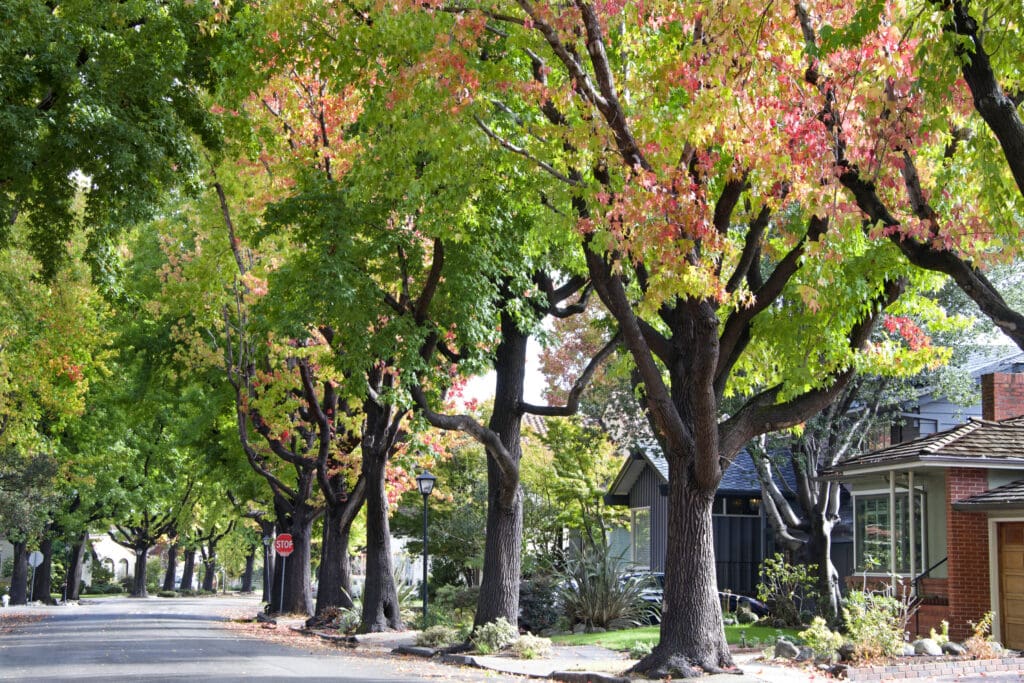
Landscaping is a great tactic to improve the aesthetics of your home’s exterior, but it can be practical as well. For example, if your house is vulnerable to harsh sunlight during summer, you can use landscaping to your benefit.
It is the perfect time to plant your choice of shade trees to keep your home cool on sunny days and even reduce energy consumption. Plus, who doesn’t love spending an hour lounging under a shady tree?
If you’re hoping to enjoy some shade on your property, here are the 10 best shade trees to plant near your house.
The 10 Best Trees to Plant Near a House for Shade
1. Paper Birch
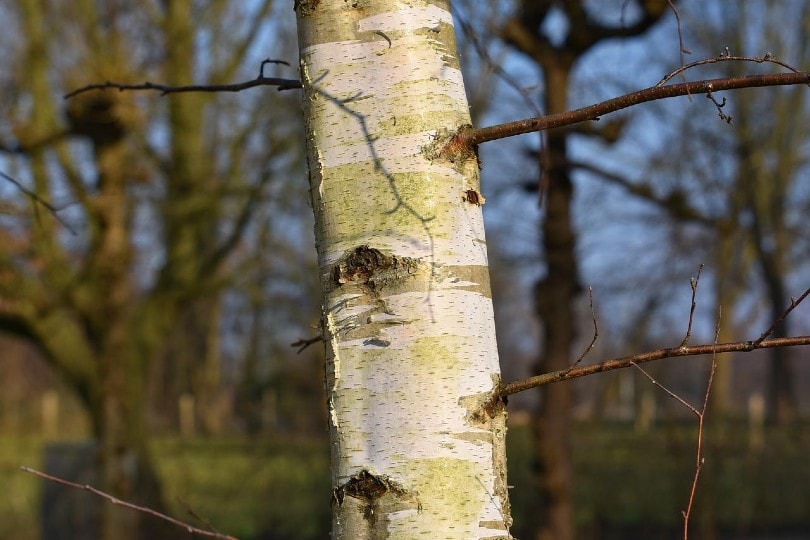
| Average Mature Size | 50 to 70 feet |
| Hardiness Zones | 2 to 7 |
| Growth Rate | 13 to 24 inches per year |
| Tree Type | Deciduous |
If you’re looking for a fast-growing shade tree, the Paper Birch can reach as high as 70 feet in just a year. Plus, its spread can grow 30 to 60 feet yearly, providing plenty of shade from the sun.
The white bark of this plain tree adds a simple beauty to your yard, while the leaves exhibit vibrant colors in different seasons. It’s best to grow this tree in clumps, allowing it to serve as a small woodland garden near your home.
2. Dawn Redwood
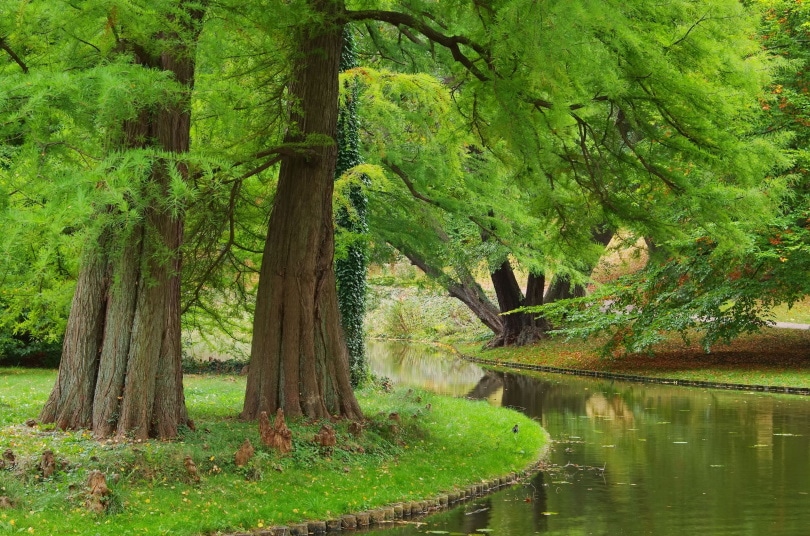
| Average Mature Size | 70 to 100 feet |
| Hardiness Zones | 4 to 8 |
| Growth Rate | 24 inches per year |
| Tree Type | Deciduous |
Discovered in China, the Dawn Redwood tree features beautiful green foliage and a deep moss bark. These trees grow rapidly, forming a pyramid shape, which may resemble a Christmas tree.
Although their spreads can grow over 25 feet yearly, Dawn Redwoods are still relatively low maintenance. You’ll only need to clean up every winter when the tree loses its needles. However, it’s essential to take extra care of this tree in the fall as the early freezes may damage it.
3. Tulip Poplar
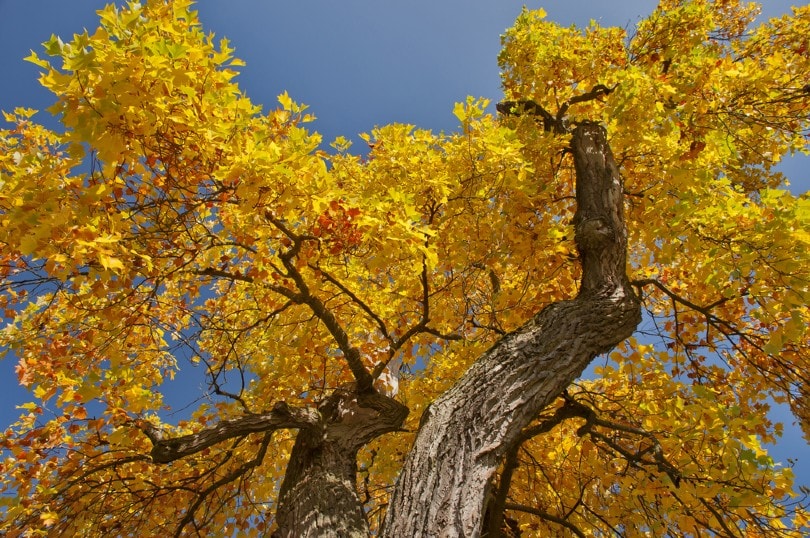
| Average Mature Size | 70 to 90 feet |
| Hardiness Zones | 4 to 9 |
| Growth Rate | 24 to 36 inches per year |
| Tree Type | Deciduous |
Tulip Poplar definitely takes the cake when it comes to the tallest and shadiest trees to plant near your house. They can grow as high as 90 feet with a 50-foot spread to provide ample shade for your entire property.
These trees are known for their uniquely shaped leaves and yellow blooms in the spring. The large size of their leaves ensures your house benefits from enough shade, regardless of your landscaping.
Tulip poplars flourish in the sun, which is why they’re the best shade tree to plant this summer.
4. Weeping Willow
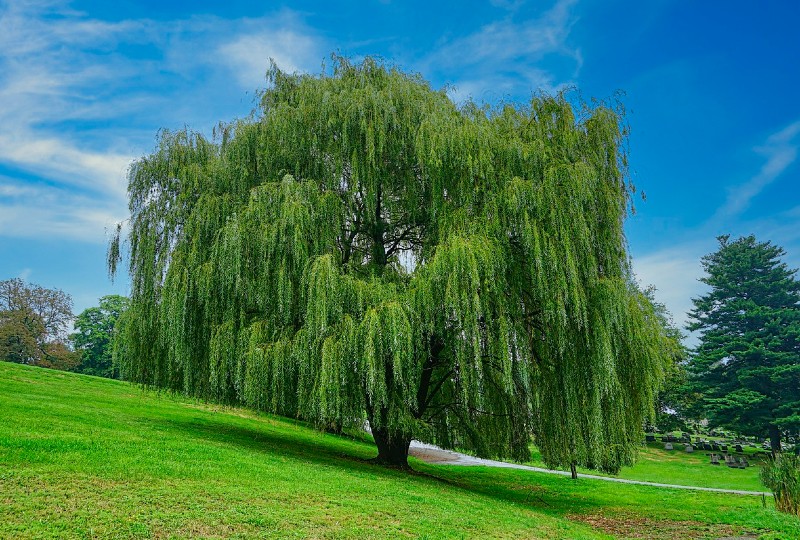
| Average Mature Size | 30 to 40 feet |
| Hardiness Zones | 4 to 10 |
| Growth Rate | 24 inches per year |
| Tree Type | Deciduous |
Scientifically known as the Salix babylonica, the Weeping Willow is famous for its open crown of wispy branches that sweep the ground and iconic long leaves. When you note its yellow twigs and green foliage flourishing, you’ll know that spring is just around the corner.
These trees grow quickly, increasing by 24 inches every year before reaching a mature size of 40 feet. In addition, Weeping Willows are reasonably low maintenance, which is why you can plant them alone to stand out in the neighborhood.
5. Hackberry
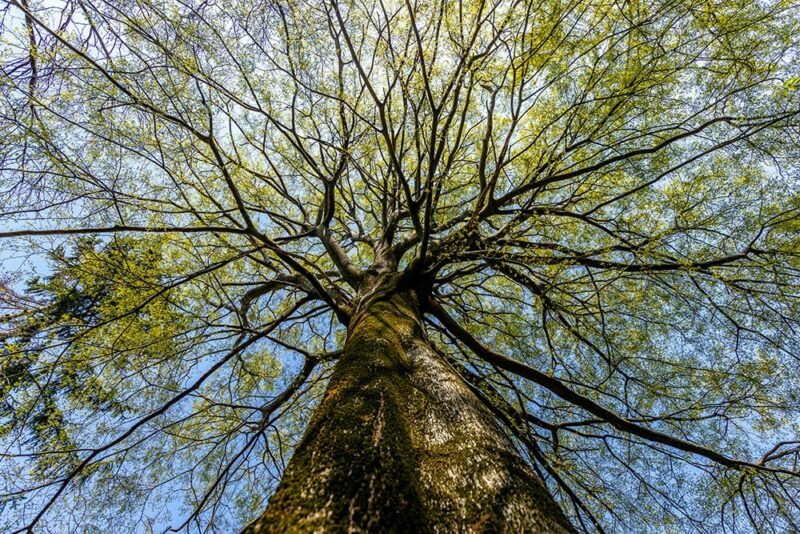
| Average Mature Size | 40 to 60 feet |
| Hardiness Zones | 2 to 9 |
| Growth Rate | 13 to 24 inches per year |
| Tree Type | Deciduous |
Most tree experts suggest that Hackberry is a very rough tree, which is why it’s pretty easy to take care of. It flourishes in almost every type of soil and temperature, making it one of the most low-maintenance shade trees on our list.
This tree can even withstand heavy rainfall of 14 to 60 inches, air pollution, and strong winds. The best part is that you rarely need to water this tree, unlike the other options on this list. Overall, Hackberries provide ample shade, conserve energy, save water, and require no maintenance.
6. American Sweetgum
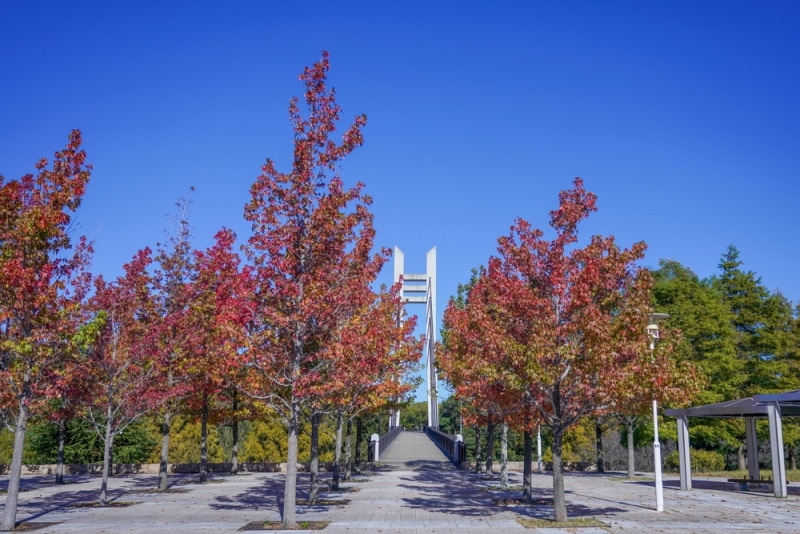
| Average Mature Size | 60 to 75 feet |
| Hardiness Zones | 6 to 8 |
| Growth Rate | 24 to 36 inches per year |
| Tree Type | Deciduous |
With star-shaped leaves, a neat crown, and delicious fruit, there’s little not to love about the American Sweetgum. Due to the corky growth of their twigs, they’re often known as the tree’s wings.
Like others on the list, this tree grows rapidly, growing two to three feet yearly before reaching a mature height of 75 feet. You’ll often note this tree planted near college buildings as the autumn foliage adds the perfect pop of color to the campus landscape.
7. American Plane Tree
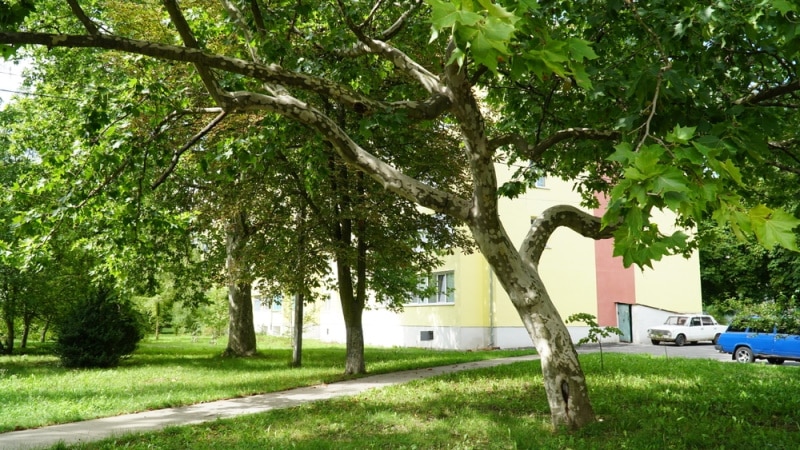
| Average Mature Size | 75 to 100 feet |
| Hardiness Zones | 5 to 9 |
| Growth Rate | 24 inches per year |
| Tree Type | Deciduous |
Also known as the Sycamore, the American Plane Tree can grow over 2 feet yearly. It’s the biggest shade tree on our list, reaching a mature height of 100 feet. Its whitish, mottled bark pairs with the bright green leaves to create a traditionally American appearance.
The Sycamore is the perfect option to consider if you have a larger property and need a shade tree that compliments it in size. However, this tree can be quite high maintenance as it only flourishes in some yards.
8. Silver Maple
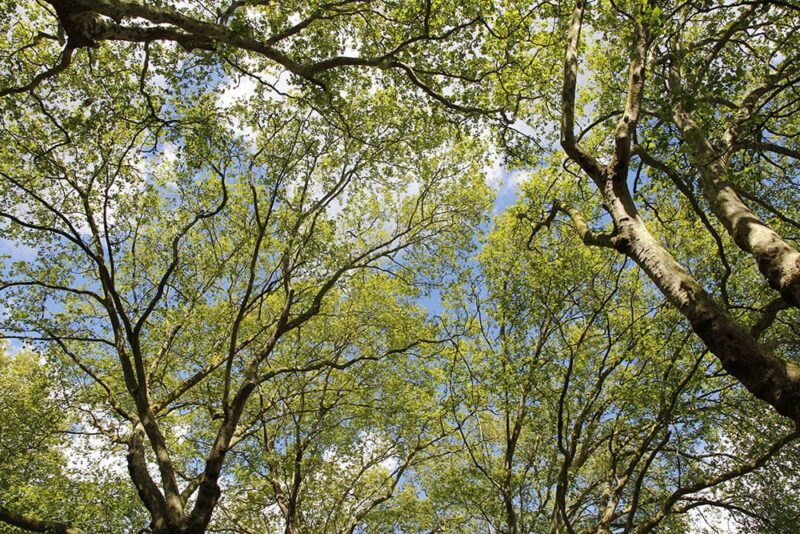
| Average Mature Size | 50 to 80 feet |
| Hardiness Zones | 3 to 9 |
| Growth Rate | 24 inches per year |
| Tree Type | Deciduous |
True to its name, the Silver Maple has silvery leaves that offer a dazzling effect on windy days. In its earlier stages, the tree’s bark also has silver undertones, making it one of the most uniquely colored shade trees.
Its classic appearance works with the 50 feet spread to create the perfect shade for the average American property. The tree flourishes in large yards due to its widespread root system. In the fall, the leaves channel bright yellow or red shades that’ll set you apart in the neighborhood.
9. Quaking Aspen
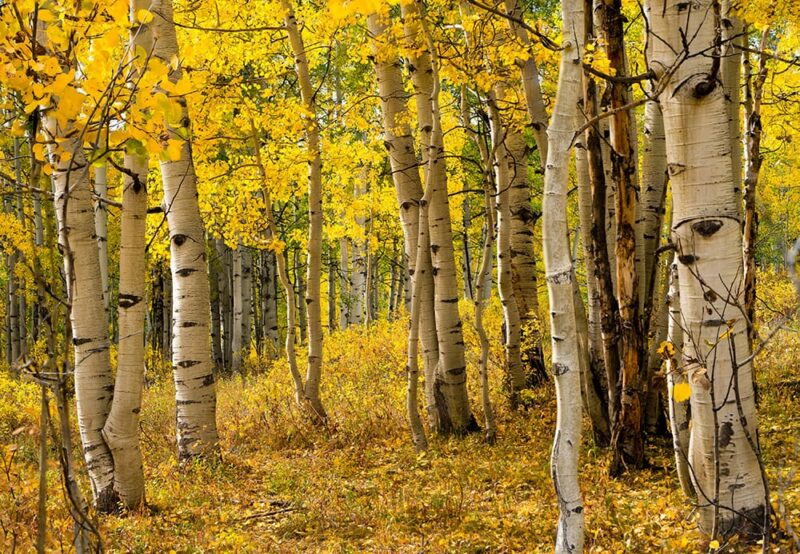
| Average Mature Size | 20 to 80 feet |
| Hardiness Zones | 2 to 6 |
| Growth Rate | 24 inches per year |
| Tree Type | Deciduous |
The Quaking Aspen is another uniquely colored shade tree, providing bright yellow foliage all year round. The vibrant leaves work with the pale bark to create the perfect cool-toned shade tree to brighten your home’s landscape.
The best part about this tree is that it can grow almost anywhere, having a wide natural range and tolerance for all soil conditions. The Quaking Aspen has an average lifespan of 150 years, but the oldest one reported is 8,000 years old!
10. Live Oak

| Average Mature Size | 40 to 80 feet |
| Hardiness Zones | 7 to 10 |
| Growth Rate | 24 to 30 inches per year |
| Tree Type | Evergreen |
The Live Oak is one of the most popular shade trees in the South, and you’ll often find it draped in beautiful Spanish moss. In good-growing locations, these trees can even live hundreds of years.
Live Oaks can grow up to 80 feet of mature height and have a mesmerizing 100 feet spread. As a result, it guarantees plenty of shade even for larger properties.
Conclusion
Considering that a shade tree’s hardiness zone, growth rate, and the root system can help you determine whether it’s the perfect fit for your home and lifestyle. So, follow an authentic planting guide and cool down your house in the summer with one of the shade trees from our list!
Related Reads:
Featured Image Credit: Sheila Fitzgerald, Shutterstock
Contents
